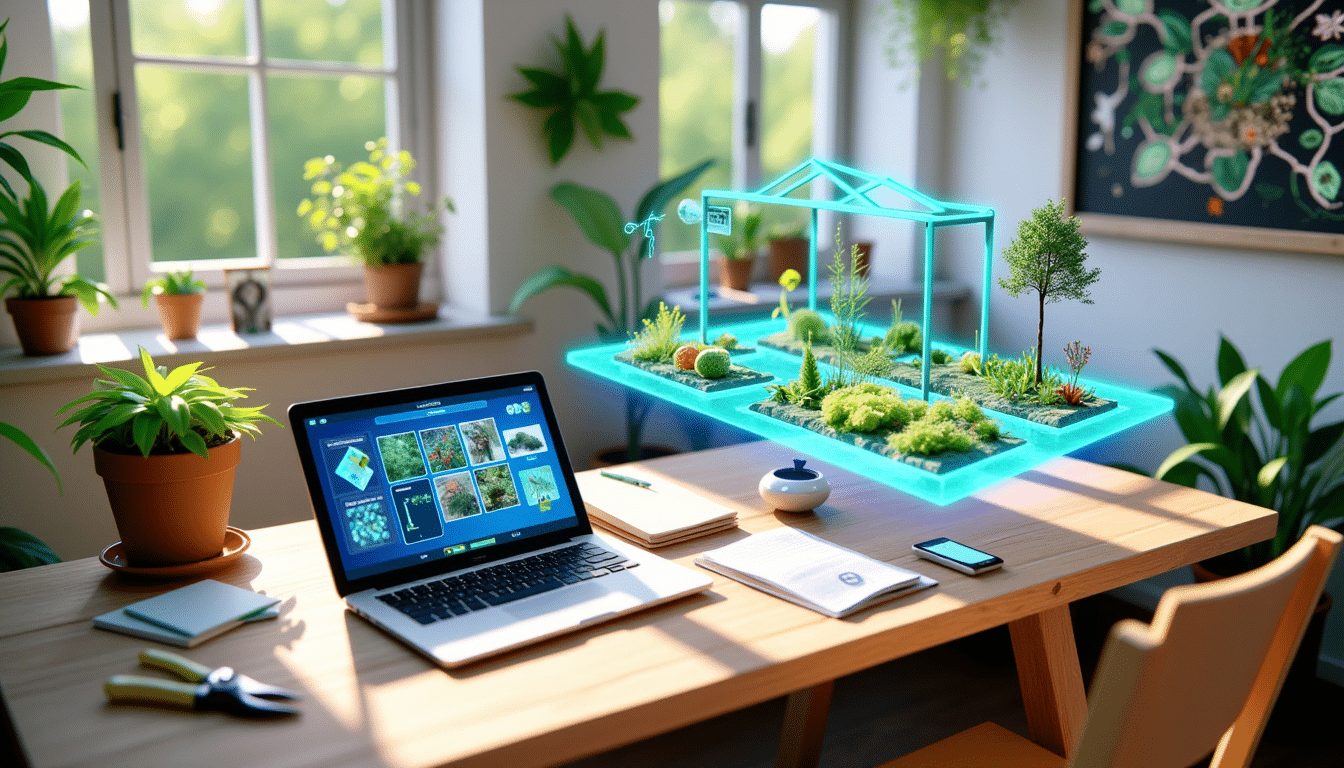Making ChatGPT Work for Your Garden
At its core, ChatGPT is just a well-informed assistant. It’s not going to dig holes for you or nip to the garden centre, but it is open 24/7 and strangely good at organising your ideas into something you can act on.
Start by giving it a good idea of your space. Feed in measurements, sun patterns (for example, ‘the back garden gets afternoon sun along the right-hand border’), what structures are already there (sheds, fences, random old paving slabs), and what sort of look you like. Are you drawn to the wildflower meadow look? Prefer neat box hedging and a patio you can jet-wash on Sunday mornings? The details you provide act like your foundation – tell ChatGPT what you’ve got and what you’re after, and it responds in kind with surprisingly decent suggestions.
One common mistake folks make when planning gardens is not setting a clear goal. Are you trying to grow food, attract bees, entertain guests, or simply have somewhere nicer than a wheelie-bin jungle? Be honest about your lifestyle too – if you’re not one for constant weeding, then a low-maintenance setup with perennials and bark mulch might make more sense than a cottage-style border requiring hours of deadheading. ChatGPT handles this sort of thinking quite well, offering themes and layout ideas based on what you’re aiming for.
From Patchy Grass to Plans on Paper
What’s often daunting about garden design is knowing how to start. You look at your patch of uneven turf and wonder how on earth people go from that to a tranquil retreat with garden lights and lavender bushes. This is where a step-by-step digital guide can really pay off.
You can ask ChatGPT for help doing a proper site analysis – how to measure, how to track sun and shade across the day, and how to spot potential problems like poor drainage or compacted soil. If Lancashire’s clay-rich ground has left your garden boggy, for example, feeding that detail into the chat will let the AI offer drainage ideas such as French drains, raised beds, or soil amendments tailored to your situation.
When you’re ready for layouts, give it your dimensions and specific requirements. Say something like: ‘I’ve got a 5m x 10m garden, mostly flat with a shaded area under a tree on the left-hand side – I’d like a small seating area, a lawn for the kids, and space for herbs.’ You can be that specific, and it will return a basic plan – where to position paths, patios, or borders so the zones feel natural and balanced. You don’t need a drawing programme either. Just sketch the layout it describes by hand, or load it into a basic plotting app if you’re digitally minded.
Thinking of adding brick paths or timber raised beds? ChatGPT can provide step-by-step DIY guides – what materials you’ll need, how to prepare foundations, and any aftercare. It’s like having a knowledgeable mate talking you through it without the need for endless YouTube rabbit holes.
Pick Plants Like a Pro (Without Guesswork)
Choosing the right plants is where a lot of plans fall apart. Many people head to the garden centre, buy whatever’s in flower, then wonder why it looks sparse or miserable come October. ChatGPT has a knack for recommending plants based on your conditions and style preferences – a bright spot if you’ve got specific goals in mind like ‘bee-friendly plants for partial shade’ or ‘low-growing perennials for a gravel border.’
Say you’ve got a sunny, well-drained bed and want something low-maintenance that flowers through the summer. You can ask for a shortlist of plants that meet those criteria and even filter by colour and growth habit. Are you allergic to constant pruning? Mention it, and you’ll get suggestions that more or less look after themselves.
It can also help you plan planting schedules. Ask it when to sow vegetables in the North West, and it’ll take into account frost dates, soil temperatures, and even give you a printable calendar. If you’re trying to stagger blooms or harvest times, it can coach you on succession planting as well – ideal for if you want fresh veg all season without glutting courgettes in July.
Remember: It’s Your Garden, Not a Textbook
While AI can spit out some corking ideas and practical guides, don’t feel you have to follow every detail to the letter. The whole point of using something like ChatGPT is to simplify the decision-making – not to bind you to it. Use it as a tool to build confidence. If you want to veer off the suggested path and throw in a feature you’ve wanted for years, like a cold frame or a garden mirror, by all means go for it.
Final Tip: Keep a Garden Journal
As you work through your design, ask ChatGPT to help you make a simple garden journal. This could include plant lists, seasonal tasks, and a month-by-month planner. Keeping organised is key to keeping inspired long-term, and it takes five minutes to pull together with ChatGPT’s help. Print it, pin it up, and you’ve not only got a plan – you’ve got accountability with your future self.
Whether you’re starting from scratch or trying to wrestle an overgrown corner back into shape, ChatGPT can help you cut through the overwhelm. And best of all, it won’t charge you £100 an hour for the privilege.






